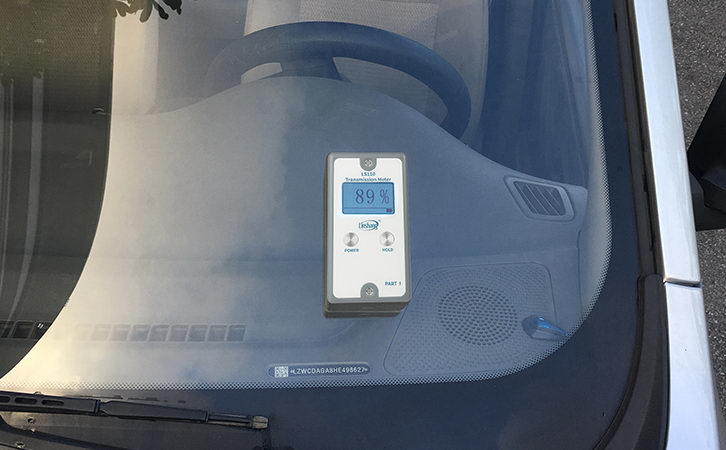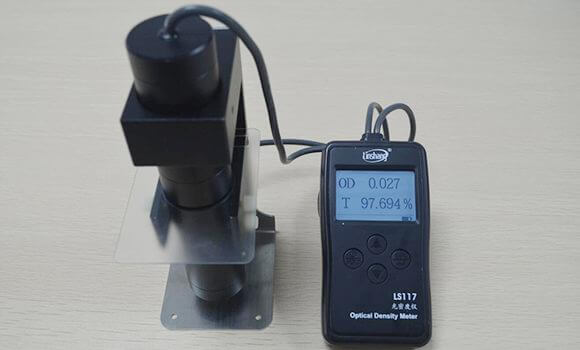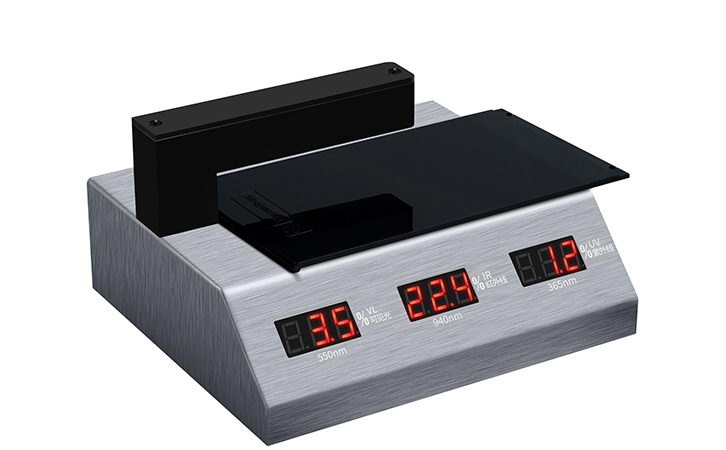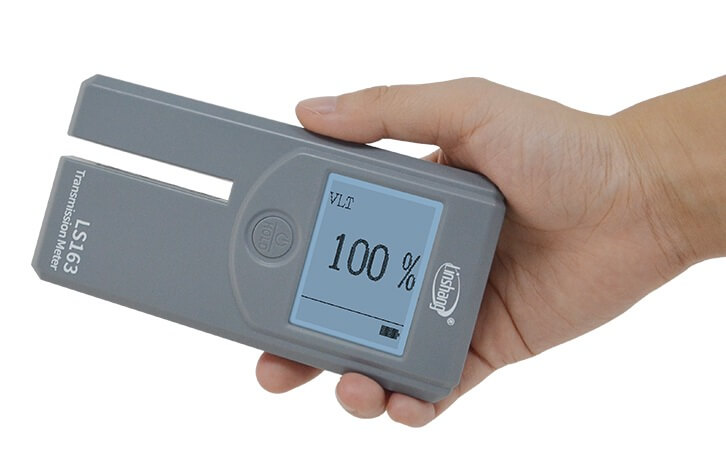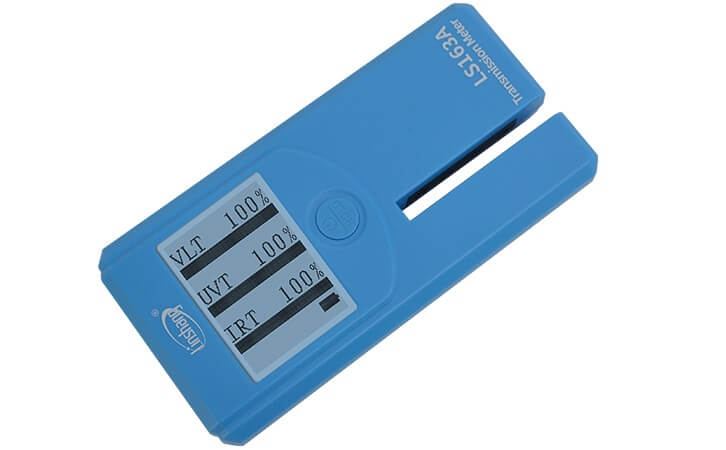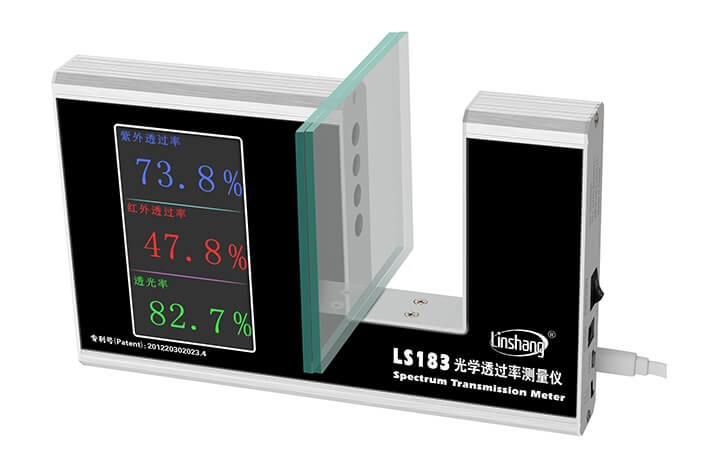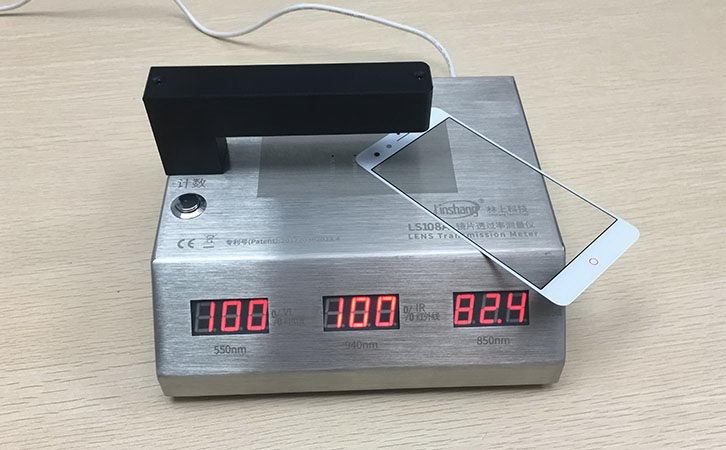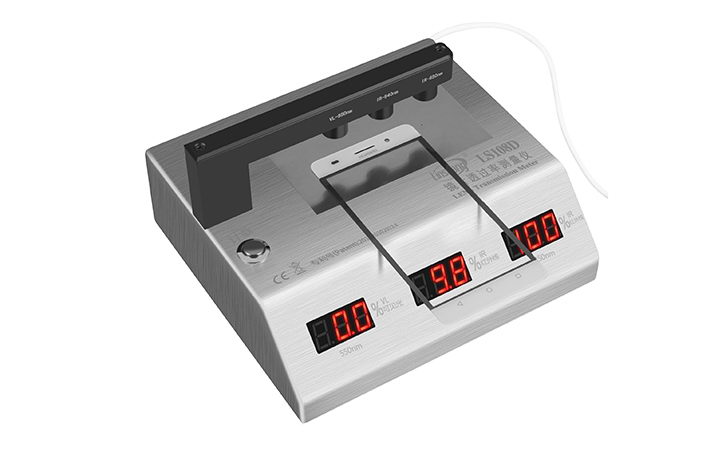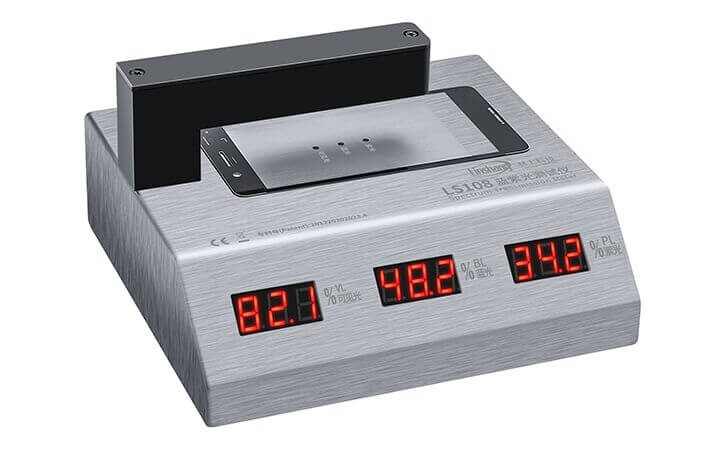How to Detect the Transmittance of Materials with Transmission Meter?
How to measure the transmittance of glass, film, mobile phone cover, eyeglass lens, IR ink hole and other materials? First of all, you need to understand what your testing needs are. If you need to measure the transmittance of IR ink holes, you need to choose a transmission meter with an infrared light source; if you need to measure the transmittance of architectural glass, then you may be needed is a transmission meter that measures UV transmittance and transmittance.
I. What is the transmission rate?
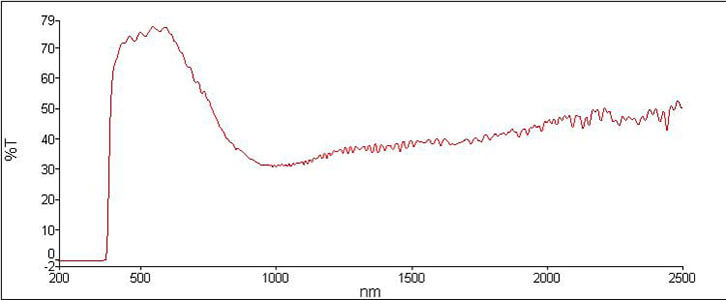
1. Definition of transmittance
Transmittance: Transmittance of radiation, the propagation of electromagnetic waves through a medium. To detect the transmittance of materials, a professional spectrometer or transmission meter can be used.
2. What is the transmission spectrum?
The material has a unique transmittance value for light of different wavelengths, with the wavelength as the abscissa and the transmittance as the ordinate. The transmittance values of a material for different wavelengths are connected into a line to obtain the transmittance spectrum.
The following figure is the transmittance spectrum of a solar film (obtained by a spectrometer). It can be found that this solar film has a very low transmittance to ultraviolet (200-380nm) and the transmittance is almost 0; The transmittance of visible light (380 -760nm) is high, about 70%; the transmittance to infrared is about 50%. This is more in line with the characteristics of a solar film. It has a higher visible light transmittance while blocking ultraviolet rays.
II. Why is it necessary to detect the transmittance of materials?
1. The industry has requirements for the transmission rate of materials
As mentioned above, the transmittance of material is an optical property. In addition to visible light visible to the naked eye, there are various electromagnetic waves such as infrared rays and ultraviolet rays in the spectrum of sunlight. For architectural glass and automobile front windshield, low ultraviolet transmittance and high visible light transmittance are required (national relevant policies stipulate that the visible light transmittance of automobile front windshield should not be lower than 70%); The quartz glass outside the lamp requires a high ultraviolet transmittance (generally 80% to 90%).
If your industry has requirements on transmittance, in order to ensure the process and classify the materials according to the transmittance, you need to use a professional transmission meter to detect the transmittance of the material.
2. Determine the uniformity of the material
The film and various composite materials undergo ink printing or coating, and the thickness and color will change, which will also affect the transmittance. In order to ensure whether the thickness of the processed product is uniform, or whether the printing is uniform, it can be judged by detecting the transmittance. Industries with such needs mainly include manufacturers of various packaging materials. By using a transmission meter to detect the transmissivity of the printed packaging materials or various films to determine the uniformity, the production process is continuously improved and the quality of the product is improved.
III. How to detect the transmittance of materials?
1. Tested by Transmission meter
(1) Common measurement band of transmission meter
Transmission meter, also known as light transmission meter, can be used to detect the transmittance of a material to one or more kinds of light. The more common ones are 850nm and 950nm infrared transmittance, 365nm ultraviolet transmittance, 550nm visible light transmittance and 380-760nm white light visible light transmittance and so on.
(2) Working principle of transmission meter
Transmission meter usually consists of two parts, namely light source and sensor. The built-in light source emits light of the corresponding wavelength on the material to be tested. The sensor can detect the incident light intensity of the light source (the original light intensity before being placed in the material to be tested) and the light intensity after passing through the material to be tested. The transmittance is equal to the ratio of the transmitted material light intensity to the incident light intensity (expressed as a percentage). The host of the transmission meter can display this data.
(3) Characteristics of transmission meter
There are many types of transmission meters. There are single-band transmission meters on the market, UV and Solar Dual Transmission Meters, and three-band transmission meters. Users can target the appropriate instrument for your own testing needs (if you have any questions about model selection, please refer to Part 4). The instrument is simple to operate and easy to carry. If there is no complex testing requirements, the transmission meter will be your best choice.
2. Test by spectrometer
A spectrometer is an optical instrument that can separate polychromatic light into a spectrum. Using a spectrometer to measure the transmittance of the material, the transmittance of each wavelength can be obtained. In addition to measuring the transmittance of the material, the spectrometer can also measure the intensity of the light source at different wavelengths. It is suitable for more professional light source detection and transmittance detection. The price and the transmission meter are not at the same level.
IV. Linshang Transmission meter classification and application
| Model | Features and main parameters | Main applications |
|---|---|---|
| LS110 | wireless split type,light transmittance | car front windshield, curtain wall glass, etc |
| LS116 | high precision, light transmittance of large thickness material |
Regular transparent materials such as glass and organic lenses |
| LS117 | transmittance and optical density | Light-transmitting materials such as opalescent, frosted, matte, aluminized film, film, X-ray film, lens, etc. |
| LS183,LS108H | infrared, ultraviolet, visible light transmittance |
Glass, organic lens and other regular transparent materials |
| LS163,LS163A | light transmittance, switchable infrared, ultraviolet transmittance and rejection rate |
Thin film, automobile side windshield, film glass |
| LS108A,LS108D | 850nm and 940nm infrared transmittance + light transmittance |
IR ink hole etc. on mobile phone cover |
| LS108 | blue light + violet light + visible light transmittance |
Glasses lenses and various anti-blue light, anti-violet materials |
1. Visible light transmission meter
Visible light transmission meter is also called light transmission meter, which is suitable for measuring the visible light transmittance (transmittance) of various materials. White LEDs comply with the international CIE photopic luminosity visual functions and ensure to pass the test by Chinese authoritative organizations.
● Adopt parallel light path design
● Especially suitable for the measurement of transmittance of car front windshield glass
● Fixed base measurement and handheld measurement
● Adopt parallel light path design is adopted
● Fixed base measurement and handheld measurement
● Suitable for optical density test of aluminum film, film, X-ray film, lens ink and other materials
● Transmittance test of translucent materials such as opalescent, matte, etc.
2. Three-band transmission meter for measuring infrared, ultraviolet and visible light
The classic three-band transmission meter measures the transmittance of infrared, ultraviolet and visible light. The instrument integrates infrared transmission meter (solar transmission meter), ultraviolet transmission tester (UV transmission meter) and light transmission meter (visible light transmission meter), all of which are designed with parallel light paths, applicable to a wide range of industries.
● Adopt parallel light path design
● Transmittance of various transparent materials such as glass, plastic, paint, etc.
● The display interface can be rotated 360 ° adaptively.
● Test 940 nm IR
● The display interface can be rotated 360 ° adaptively.
● Test 1400 nm IR
● Use parallel light path design
● Transmittance testing of thermal insulation coatings, single-layer glass,etc
3. IR ink hole transmittance and lens transmittance test
● Test aperture: 1 mm
● Applicable to infrared transmittance test of mobile phone cover IR ink, remote control window,etc
● Test aperture: 0.5mm
● Applicable to infrared transmittance test of mobile phone cover IR ink, remote control window,etc
● Adopt parallel light path and flat desktop design, the test aperture is 3mm
● Test eyeglass lenses and various anti-blue light and anti-violet materials
- Features of the LS183 UV Transmittance Meter
- Difference between Visible Light Transmission Meter LS183 and LS108H
- Spectacle lens anti-blue light detection---blue-violet light transmittance meter
- Spectrum Transmission Meter for Measuring PC Sheet
- Difference between LS103A and LS183 spectrum transmission meter
- Measuring the Transmittance of a Hemisphere by Plastic Transmittance Meter
